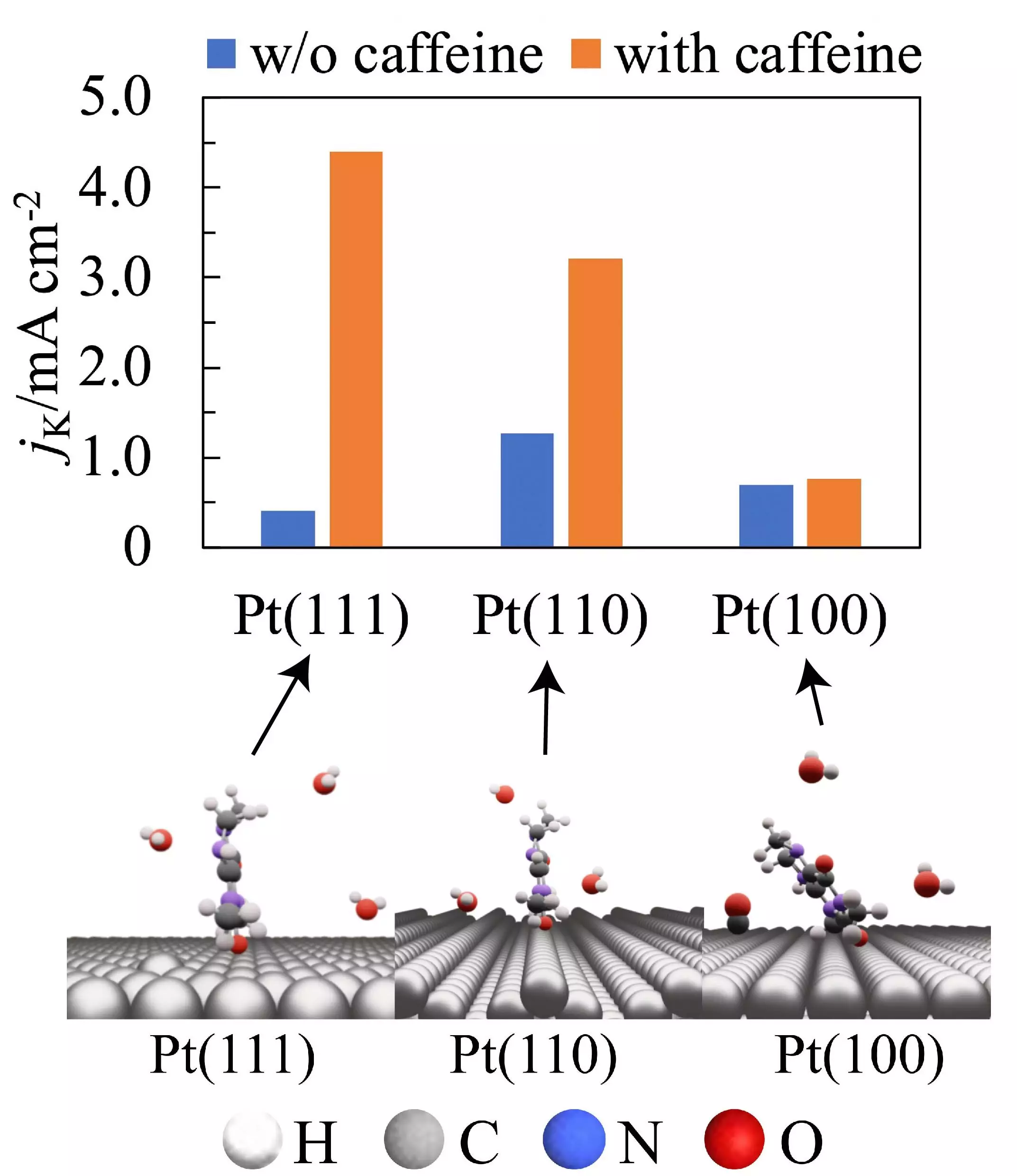Fuel cells have been identified as a key component in the global transition away from fossil fuels towards more sustainable energy sources. These cells consist of an anode, cathode, and electrolyte, working together to convert the chemical energy of fuel directly into electricity. However, one of the challenges faced by fuel cells is the presence of water, which can hinder their performance by reacting with the platinum catalyst and forming a layer of platinum hydroxide on the electrode. This layer obstructs the efficient catalysis of the oxygen reduction reaction (ORR) and leads to energy losses, necessitating a high platinum loading to maintain efficiency and driving up costs.
In a recent study published in Communications Chemistry, Professor Nagahiro Hoshi and his team at Chiba University in Japan discovered a potential solution to this problem. By adding caffeine to certain platinum electrodes, the researchers found that the activity of the ORR could be increased significantly. This discovery has the potential to reduce the platinum requirements of fuel cells, making them more affordable and efficient in the long run.
The researchers immersed platinum electrodes with specific atomic arrangements in an electrolyte containing caffeine to assess its impact on the ORR. They observed a marked improvement in ORR activity with increasing caffeine concentration in the electrolyte. Caffeine was found to adsorb onto the electrode’s surface, preventing hydrogen adsorption and the formation of platinum oxide. However, the effectiveness of caffeine varied depending on the orientation of the platinum atoms on the electrode’s surface. At a caffeine molar concentration of 1 × 10^-6, the ORR activity on Pt(111) and Pt(110) increased by 11 and 2.5 times, respectively, while there was no significant effect on Pt(100).
Further analysis using Infrared Reflection Absorption Spectroscopy revealed that caffeine gets absorbed on Pt(111) and Pt(110) surfaces with its molecular plane perpendicular to the surface. On Pt(100), steric hindrances caused caffeine to attach with its molecular plane tilted relative to the electrode surface. This difference in molecular orientation explained the varying impact of caffeine on the ORR activity of different platinum surfaces. The increased activity on Pt(111) and Pt(110) was attributed to reduced PtOH coverage and lower steric hindrance of the adsorbed caffeine, while the effect was neutralized on Pt(100).
Unlike batteries with limited lifespans, fuel cells can continue to generate power as long as fuel is supplied, making them suitable for a wide range of applications. The incorporation of caffeine as a catalyst for fuel cell reactions presents a novel approach to improving their efficiency and reducing costs. This method has the potential to revolutionize the design of fuel cells and facilitate their widespread adoption in various industries, including vehicles, buildings, and space missions.
The study conducted by Professor Hoshi and his team sheds light on the promising role of caffeine in enhancing fuel cell efficiency. By understanding the molecular mechanisms behind caffeine’s impact on the ORR, researchers are one step closer to developing more cost-effective and sustainable energy solutions for the future.


Leave a Reply